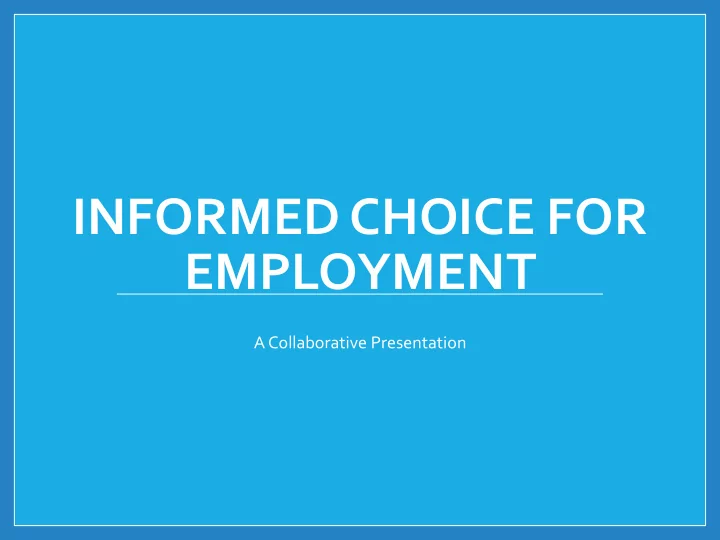

INFORMED CHOICE FOR EMPLOYMENT A Collaborative Presentation
System Alignment Employment
Goals Minnesota is committed to ensuring that people with disabilities have opportunities to make informed choices in all areas of their lives, including work.
Employment First Policy Raise expectations that working age Minnesotans with disabilities • Can and want to work • Can achieve competitive, integrated employment • Will be offered the opportunity to work
Having Choices People want choices in their lives, including their jobs Expect to achieve competitive, integrated employment, which is defined as: • Full-time, part-time, or self-employment with or without supports • Paid by an employer who is not the individual’s service provider • Paid at least at minimum wage, but not less than the customary wage and level of benefits paid by the employer for the same or similar work performed by workers without a disability. • Definitions are in the MN Employment First Policy and the MN Olmstead Plan .
Common Framework An Informed Choice framework and resources that can be used at the local level with Minnesotans with disabilities.
Informed Choice • DEED, DHS, and MDE develop individualized plans with the people they serve. Often, employment is not a part of those individualized plans. • A toolkit with resources for informed choice is available on DB101.org. Go to the partners tab and click on “Go deep and apply” • Informed Choice can be organized into three basic steps.
Engage/Discover The first step is to have a strengths-based discussion to explore the person’s interests skills and abilities.
Planning The second step is to help the person develop an action plan to achieve goals. • Some examples include • Informational interviews • Job shadowing or tryouts • Experiential learning • Understanding disability benefits and work • Meet with others who are working
Follow Up The third step is to follow up regularly on action items identified in the plan and to identify next steps.
What’s Next • Look for additional information and training in the coming months.
Conclusion • DEED, DHS and MDE are committed to continuing our work so that there is an increase in competitive, integrated employment opportunities for people with disabilities in Minnesota.
QUESTIONS OR COMMENTS? dsd.employmentfirst@state.mn.us
Recommend
More recommend